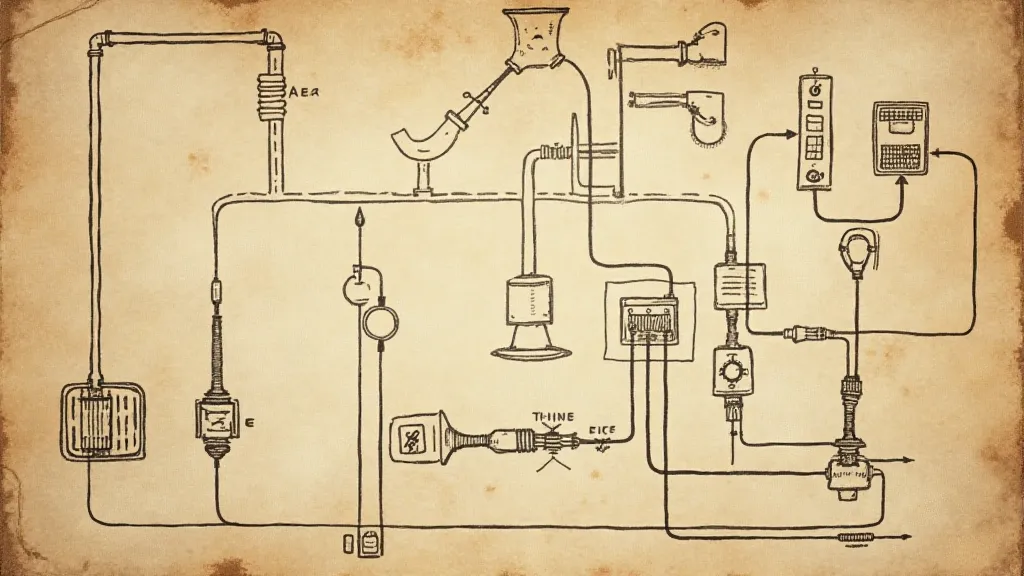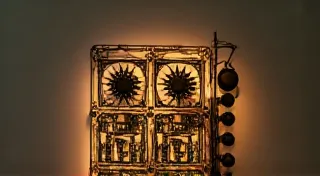Whispers of the Void: Detecting and Analyzing Electromagnetic Fields
There's a certain magic in breathing new life into old things. I recently acquired an antique accordion, a magnificent instrument crafted sometime in the early 20th century. Holding it, feeling the weight of the bellows, the cool metal of the reeds—it felt like grasping a fragment of a forgotten world. It wasn’t just an object; it was a vessel of memories, of laughter and music echoing across decades. Restoring it, carefully cleaning each key, repairing the delicate leather, became an act of reverence. It reminded me that every creation leaves a trace, a subtle vibration, and that even silence isn's truly empty.
This sentiment, this recognition of unseen forces and lingering impressions, led me down a fascinating path – the study of electromagnetic fields (EMF). We’re surrounded by them, invisible waves emanating from everything from power lines to our smartphones. While many dismiss them as just "noise," I started wondering: can we actually *detect* them, and what can they tell us?

The Invisible Landscape
EMF isn's just about dangerous radiation. It's a fundamental aspect of our existence, a consequence of electrical activity. Historically, our awareness of these fields grew alongside our mastery of electricity. Early experiments with static electricity, like those of Benjamin Franklin and Alessandro Volta, were the first tentative steps into understanding this phenomenon. The discovery of radio waves by Heinrich Hertz in the late 19th century ushered in the age of wireless communication, and with it, an increasingly complex electromagnetic environment.
Today, our lives are immersed in EMF. We rely on them for power, communication, and entertainment. But this convenience comes with an increasingly dense and complex "invisible landscape.” It's a landscape we largely ignore, yet it permeates every aspect of our modern lives. Considering the sheer complexity of this field, it’s surprising that we haven’t developed more sensitive ways to interact with it. The process of understanding such systems, sometimes requiring innovative approaches to repurposing old electronics, can be quite rewarding – a process you might explore further in articles like The Alchemist’s Crucible: Repurposing Old Electronics into Artistic Creations.
Building a Simple EMF Detector
My initial goal was simple: to build a basic EMF detector, something more than just a rudimentary meter. I wasn’t aiming for scientific precision, but rather for a sense of exploration, a way to *feel* the electromagnetic environment around me. There are various approaches, from simple loop antennas connected to audio amplifiers to more complex circuits employing operational amplifiers and signal processing. I opted for a straightforward circuit using a ferrite rod antenna and a basic comparator.
The principle is fairly simple. The ferrite rod concentrates the incoming EMF, inducing a small voltage. This voltage is then amplified and compared to a reference voltage. When the amplified EMF signal exceeds the reference, the output changes state, triggering an audible tone or a visual indicator. This simple setup, built on a breadboard with a few basic components, became my portal to the unseen. The beauty of these projects, like the delicate repairs on my accordion, lies in the simplicity and the direct connection to the underlying principles. Sometimes, these seemingly simple projects reveal the complexity of logical systems, something akin to the intricacies detailed in The Dream Weaver's Loom: Creating Reactive Lighting Systems with Microcontrollers.
Exploring the Everyday Environment
The results were surprising. I started by holding the detector near common sources: electrical outlets, microwave ovens (when operating), and even power transformers in old appliances. The readings were consistently higher than I expected. Then, I moved to less obvious areas – near old wiring in my walls, under the floorboards. Here, the readings were more nuanced, reflecting the subtle fluctuations in the electromagnetic field.
The most fascinating discoveries were the unexpected "hotspots." Areas where the EMF readings were significantly higher than surrounding zones. Often, these corresponded to areas with old wiring, or where electrical devices were concentrated. It wasn’t about measuring dangerous levels of radiation – it was about appreciating the complexity and pervasive nature of the electromagnetic environment. My little detector became a sort of divining rod, revealing hidden aspects of my home’s electrical infrastructure. It’s a feeling reminiscent of uncovering a craftsman’s signature mark hidden beneath years of accumulated grime on an antique piece.

The Accordion and the Field: An Analogous Relationship
The connection between restoring my antique accordion and building an EMF detector might seem tenuous, but it’s deeply rooted in a shared appreciation for detail and a desire to understand underlying principles. The accordion is a testament to human ingenuity – a complex mechanical system capable of producing beautiful music. It works by harnessing vibrations, subtle fluctuations in air pressure, to create harmonious sounds. Similarly, the EMF detector works by amplifying and interpreting subtle fluctuations in electromagnetic fields.
Just as I spent hours carefully cleaning each key of the accordion, revealing the craftsmanship of a bygone era, building and calibrating my EMF detector was a process of refinement and understanding. Both activities fostered a sense of connection – a connection to the past, to the principles of physics, and to the intricate systems that shape our world. The challenges often involve navigating complex sensor data, a situation not unlike the sophisticated techniques outlined in The Cartographer’s Compass: Navigating Sensor Fusion for Autonomous Systems.
Beyond Detection: Analyzing and Understanding
My initial project was just the beginning. The true potential of EMF detection lies in the analysis of the data. By recording readings over time and correlating them with external factors, it’s possible to gain a more nuanced understanding of the electromagnetic environment. Debugging these complex systems can be a frustrating endeavor, often requiring persistence and careful observation, as detailed in “The Ghost in the Machine: Debugging the Unseen in Arduino Projects.”
Consider the possibilities: identifying sources of electrical interference, detecting faults in wiring, or even understanding how EMFs interact with biological systems. More sophisticated detectors, incorporating signal processing techniques and data visualization tools, can provide even greater insights. Imagine a system that could map EMF hotspots across an entire city, providing valuable data for urban planning and safety initiatives.

A Gentle Reminder
Building an EMF detector isn’t about fear or paranoia. It’s about curiosity, about appreciating the complexity of the world around us. It’s about taking a moment to pause and consider the subtle forces that shape our existence. It's a pursuit that echoes the act of breathing new life into an antique accordion, revealing the ingenuity and artistry of those who came before us. And perhaps, just perhaps, by paying closer attention to the whispers of the void, we can gain a deeper understanding of ourselves and the world we inhabit. The quiet act of observing and understanding often reveals more than any loud pronouncement ever could. The intricate workings of electrical systems, from vintage wiring diagrams to modern sensor networks, offer endless opportunities for exploration and discovery. The constant evolution of technology necessitates a continued effort to understand and adapt to the complex electromagnetic landscape that surrounds us. Further exploration into the applications of these technologies could involve designing custom circuits to measure specific frequencies, or developing algorithms to filter out noise and extract meaningful data. The potential for innovation is vast, and the rewards are a deeper understanding of the forces that shape our world. Furthermore, the development of more accurate and user-friendly EMF detectors could empower individuals to take control of their electromagnetic environment, fostering a greater sense of awareness and well-being. Consider the benefits of integrating EMF detection into smart home systems, providing real-time data on electromagnetic exposure and allowing for proactive mitigation strategies. The possibilities are truly endless, and the journey of discovery is just beginning.





